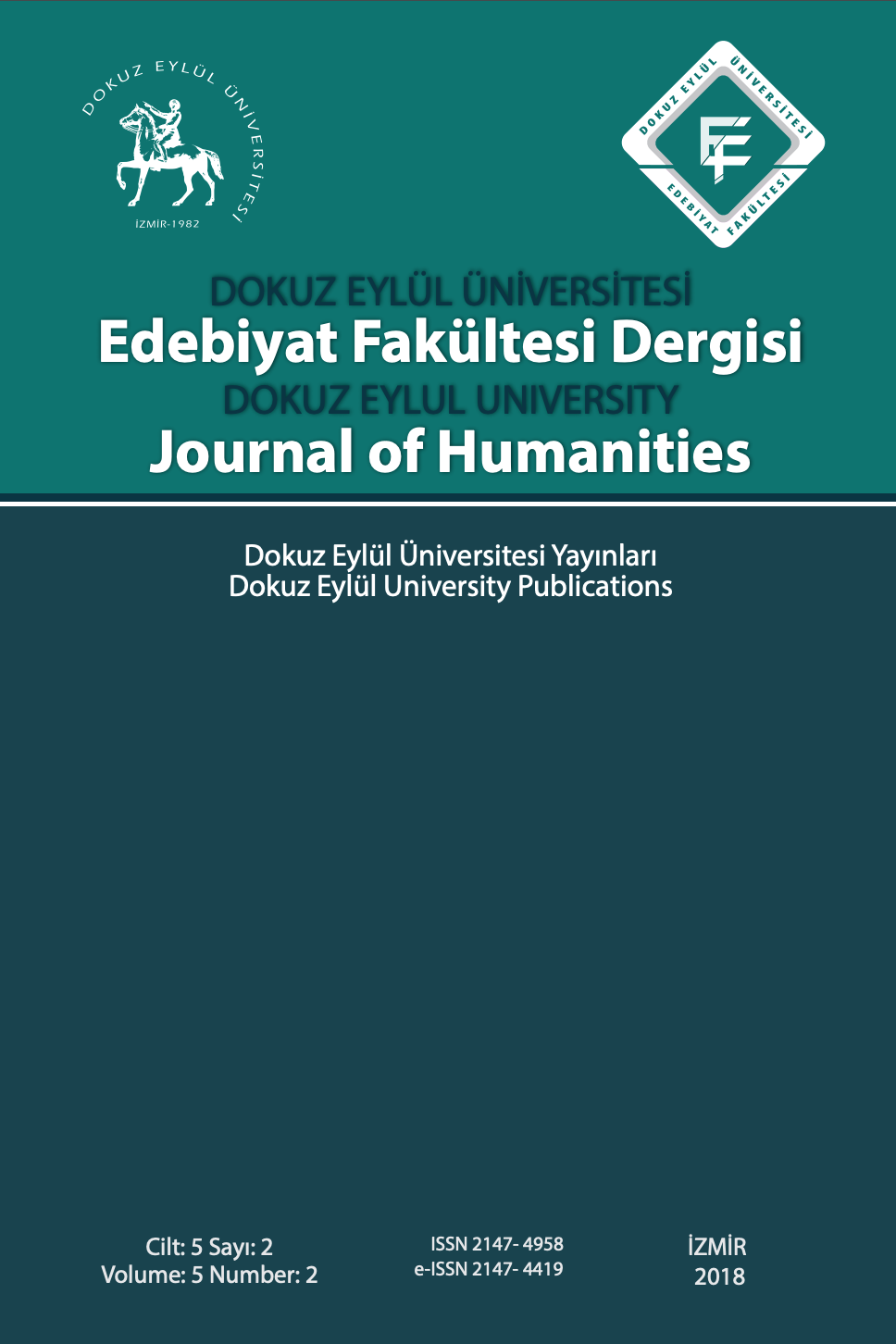YOZLAŞMIŞ TOPRAKLAR ALTINDA GÖMÜLÜ KRAL ARTHUR’UN SÖZDE EFSANESİ: KAZUO ISHIGURO’NUN GÖMÜLÜ DEV ROMANINDA ARTHUR EFSANESİNİN YENİDEN YAZIMI
Gömülü Dev adlı romanının anlatısını Kral Arthur dönemi Britanyasında kurgulayan Nobel Edebiyat Ödüllü yazar Kazuo Ishiguro (1954), bu eserde Axl ve Beatrice’in ilginç yolculuklarını kayıp, ölüm, pişmanlık ve aşk unsurlarıyla bir arada anlatarak bellek, travma, unutma ve şövalyelik kurallarının öne çıkan unsurlarını derinlemesine incelemiştir. Köylülerin yakın ve uzak geçmişleri hatırlamamasına neden olan tuhaf bir unutkanlık süresince, Arthur efsanesine ait şövalyelik geleneği hakkındaki gömülü anlatı, sadakat, onur ve cesaret gibi değerleri hemen her sayfada sorgulayarak kendisini gösterir. Ishiguro, oğullarını ısrarla bulmak isteyen ve hakkında çok fazla bilgi olmayan yaşlı çift Axl ve Beatrice'in hikayesini, gayri meşru bir bebek sahibi olmanın acı verici sonuçlar doğuracak olması üzerinden anlatır. Ayrıca bellek ve travma kavramlarıyla ilgili unsurlardan yararlanarak Arthur efsanesini çağdaş bir perspektifte yeniden yazar. Bu çalışmanın amacı, Kazuo Ishiguro’nun Kral Arthur efsanesini 21. yy bakış açısıyla yeniden yazmasındaki belirgin faktörlerin ne olduğunu göstermek için, kayıp, ölüm, bellek, travma, hatırlama ve unutma gibi olguları, tarihsel üstkurmaca gibi postmodern anlatı stratejilerine ait temel unsurlarla birlikte irdelemektir.
Anahtar Kelimeler:
Kazuo Ishiguro, Gömülü Dev, Tarihsel Üstkurmaca, Bellek, Travma, Kral Arthur
THE QUASI-LEGEND OF KING ARTHUR BURIED UNDER CORRUPTED LANDS: HISTORICIZATION OF ARTHURIAN LEGEND IN KAZUO ISHIGURO’S THE BURIED GIANT
Kazuo Ishiguro (1954), the Nobel Laureate author, setting his novel The Buried Giant in Arthurian Britain, thoroughly analyzed prominent points of memory, trauma, forgetfulness, and chivalric code by way of narrating the interesting detours of Axl and Beatrice in a story of loss, death, regret, and love. In a strange forgetfulness, which causes villagers to forget their distant and recent past, the buried story about Arthurian chivalry manifests itself on every page by raising questions on the concepts of loyalty, honour, and courage. Ishiguro tells the story of the old couple, Axl and Beatrice, who perseveringly want to find their son, crumbs of information about who would bring out the painful consequences of having an illegitimate baby. He also rewrites the Arthurian legend from a contemporary perspective by making use of elements related to the concepts of memory and trauma. The aim of this study is to analyze the concepts of loss, death, memory, trauma, remembering, and forgetting under the basic points of postmodern narrative strategies such as historiographic metafiction to show the determinant factors on the historicization of King Arthur in an evolutionary story of Kazuo Ishiguro in a 21st- century perspective.
Keywords:
Kazuo Ishiguro, Buried Giant, Historiographic Metafiction, Memory, Trauma, King Arthur,
___
- Caruth, C. (1996). Unclaimed Experience: Trauma, Narrative, and History. Baltimore: JHU Press.
- Connor, S. (ed.). (2004). The Cambridge Companion to Postmodernism. Cambridge: Cambridge University Press.
- Guo, D. (2012). ‘Trauma, Memory and History in Kazuo Ishiguro’s Fiction’ in Theory and Practice in Language Studies. Vol. 2, No. 12, pp. 2508-2516, December.
- Hansen J. (2015). Theories of Memory and Imaginative Force of Fiction. Siobhan Kattago (Ed.), in The Ashgate Research Companion to Memory Studies (p. 197-210). Farnham: Ashgate Publishing.
- Hutcheon, L. (2003). The Poetics of Postmodernism. New York and London: Routledge.
- Ishiguro, K. (2016). The Buried Giant. London: Faber & Faber Limited.
- Lyotard, J. F. (1984) The Postmodern Condition: A Report on Knowledge. Minneapolis: University of Minnesota Press.
- Shaffer, B. W. (1998). Understanding Kazuo Ishiguro. University of South Carolina Press.
- Teo, Y. (2014). Kazuo Ishiguro and Memory. New York: Palgrave Macmillan.
- Waugh, P. (2001). Metafiction: The Theory and Practice of Self-Conscious Fiction. London and New York: Routledge.
- Whitehead, A. (2009). Memory. London: Routledge.
- ISSN: 2147-4958
- Yayın Aralığı: Yılda 2 Sayı
- Başlangıç: 2011
- Yayıncı: Dokuz Eylul Üniversitesi Matbası
Sayıdaki Diğer Makaleler
GÜNDELİK DİL FELSEFESİNİN WİTTGENSTEİNCI BİR SAVUNMASI
YİĞİT BENER’İN ANOMİK BABALARI:ACI PORTAKAL
BİYOİKTİDARIN PANZEHRİ OLARAK BİYOPOLİTİKA
FEYERABEND’DEN ELEŞTİREL TASARIMA ÇOĞULCULUK İLKESİ: TÜM BİLİMLERİ VE BİLİM DIŞILARI AÇIN!
LARRY BENSKY’NİN HAROLD PINTER İLE RÖPORTAJININ BİÇEMSEL BİR İNCELEMESİ
SABAHATTİN ALİ’NİN ROMANLARINDA DEVLET MEMURLUĞU VE MEMUR ODALARI
